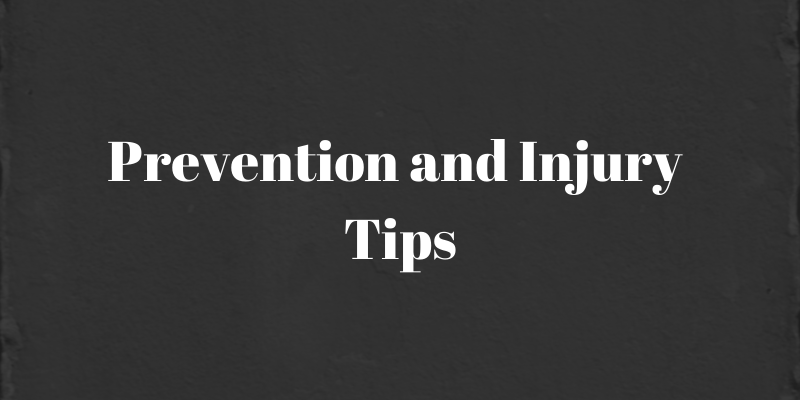This article was supposed to be about training for a 5K. Unfortunately, a day into training, I overworked my Achilles tendon and developed tendinitis. Let me start off by telling you, I’m not much of a runner. Because I tend to walk on the outsides of my feet (a lovely little condition that Google informs me is called underpronation) I’ve never been able to run for a sustained amount of time without getting shin splints.
Really, this means that I get very little exercise. During my undergrad, when I lived a mile from campus and walked everywhere, this was okay. My healthy living was eating light and walking to and from school. But, after I graduated and got a desk job, things quickly changed. I’ve gained a lot of weight in the last year, and since I’ve always wanted to be better at running, I decided to start training for a 5K on a treadmill. Luckily, my office has a Sole Treadmill, so this shouldn’t have been too hard, right?
Where I Went Wrong
Enter day one of training. I’d googled a training schedule for a 5K and decided I could plausibly run one in about a month and a half. And, luckily for me, my office is also equipped with a couple Sole treadmills. Unluckily for me, by the time I actually convinced myself to get on the treadmill, I’d forgotten what the schedule told me to do on the first day of training.
My brain: I’ll run half a mile and then walk half a mile, and I’ll do that for thirty minutes. Thirty minutes is not too much time, right?
Wrong.
Well, not entirely wrong. But I hadn’t considered two things. One, I hadn’t truly gone for a run in about…ten years. And, I’d forgotten to warm up. Not forgotten, really, since I actually didn’t know I needed to warm up before using the treadmill. I thought that’s what the treadmill was for. Did I mention I’m not into running?
The actual run wasn’t bad, but toward the end I noticed the tendon behind my right heel was sore. By the time I stopped and sat down to actually start stretching, my tendon was swollen and burning. But at the time, I literally thought it was just workout pain. Oh yeah! Rub some dirt in it! I thought I was awesome and all worky-outy. Until the next day, when it was still sore.
Taking Care of the Problem so You Can Keep on Running Like a Total Bad A
Tip #1: Rest Up
When I went to have it checked out, the first thing my doctor recommended was rest. Great, no working out, after just a day of working out? I wanted to laugh at the irony, but I also really wanted to get into shape. Ultimately, what I needed to do was switch from high-impact exercise (like running) to low-impact exercise (like swimming, biking, and elliptical training) for a few months, and build up to longer lengths of time. “Rest” for my body just meant not pushing it in ways that could cause injury.
Tip #2: Ice and Ibuprofen
I also had to ice the tendon for twenty minutes at a time and take ibuprofen when it was sore, and work on stretching out my calf muscles. There were two basic exercises my doctor gave me to do, which you’ve all probably tried before anyway.
Tip #3: Stretch
The Strange Push Up
The first involves simply leaning against a wall with your hands in front of you and extending your right leg straight behind you, heel on the ground. Your left leg should be bent in front of you, putting slight pressure on the achilles tendon in your right leg. Push your hips toward the wall and hold for ten seconds to stretch out your calf and tendon. Sort of like a strange push up, but against the wall. Repeat on each leg twenty times.
The Step Bounce
The second exercise involves standing on the edge of a step with just the front part of your feet on the step. Dip your heels down and come back up again, slowly, twenty times. Be sure not to go too quickly with this exercise, and hold onto a railing if you need to. Remember, you just want to stretch these muscles, not injure them further. (Also, I totally made up the name for this and all previous stretches mentioned, just so you know).
Preventing the Problem in the First Place So You Can Keep on Running Like a Bad A
So, you guessed it, achilles tendonitis is caused by a sudden increase in exercise (read: running when you haven’t run in years) and tight calf muscles (read: serious lack of stretching).
Tips #1: Stretch (Again)
To avoid any problems with your achilles tendon (and a variety of other problems) stretch when you wake up, and before and after you exercise. Remember when you’re stretching that’s exactly what you’re supposed to do: stretch. You don’t want to be in even more pain from stretching out. You just want to warm up.
Tip #2: Get a Good Pair of Shoes
You may also want to invest in a good pair of running shoes with arch support, especially if you’re having problems with your achilles tendon. This part is obviously trial and error. Find the best pair that works for you. Whatever you do, don’t run with shoes that are really worn, as that can lead to further damage (trust me on that one).
No Matter What, Keep Going
Don’t let injuries keep you from reaching your fitness goals. Warm up before they happen, and don’t be discouraged if they do happen. Just take it easy and try something else. Even though I may not be able to get on the treadmill for another month or so, I’ve been having a fun time finding out what other machines work well for me. Okay, “fun” is a stretch, but it has been helpful. Mixing it up keeps me from getting bored (I am told by my good friend Google this is called cross-training). No matter what, just keep going. You’ll only reach your goals if you try.
 Mary Kremer loves, loves, loves writing and traveling. If she could do both forever, she’d be a happy camper. In her free time she hikes, tries to exercise, and bugs her husband about things like women’s issues as he’s trying to fall asleep.
Mary Kremer loves, loves, loves writing and traveling. If she could do both forever, she’d be a happy camper. In her free time she hikes, tries to exercise, and bugs her husband about things like women’s issues as he’s trying to fall asleep.




















